Click on the exhibit.
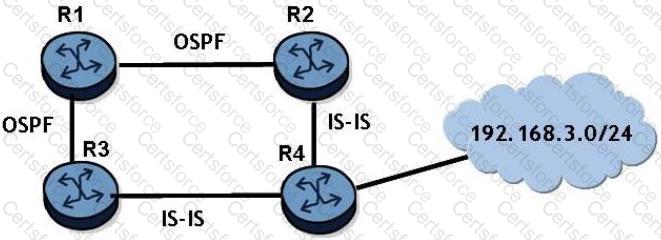
If router R2 re-distributes the IS-IS route 192.168.3.0/24 into OSPF, router R3 will receive two routes to 192.168.3.0/24. Assume that all IS-IS routers are L1/L2 capable and are in the same area.
Which of the following is TRUE?
Click on the exhibit button below.
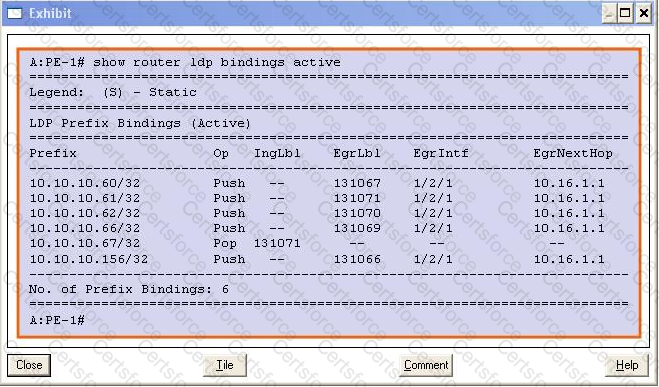
Consider the output shown; what table is displayed?
Click on the exhibit.
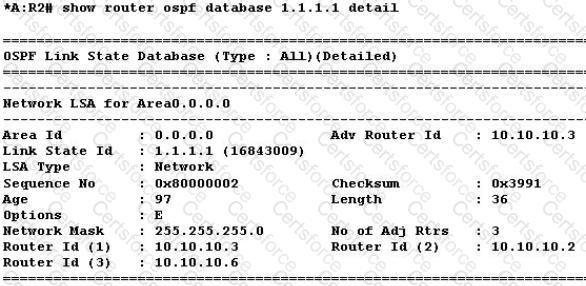
Which router is the designated router for the broadcast network?
Click on the exhibit button below.
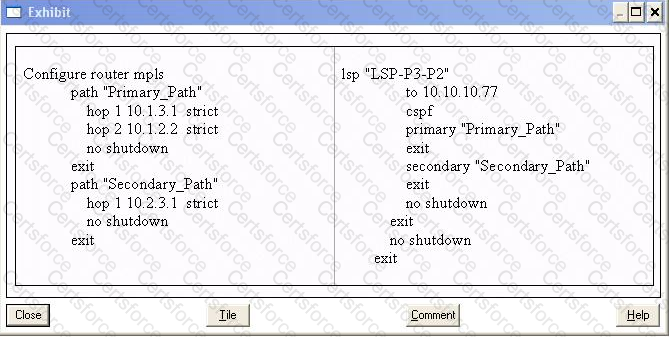
Given the configuration below, which of the following scenarios is FALSE?
Click on the exhibit.
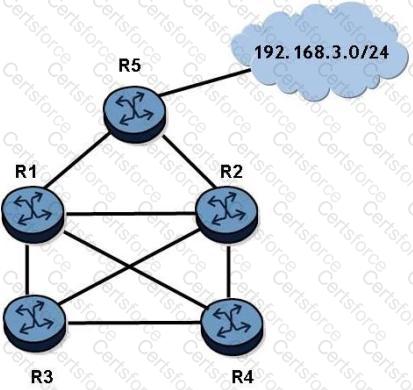
OSPF is operational on all links in the network diagram, all routers are the same cost, and all routers are configured with an ECMP value of 4. Router R5 advertises the prefix 192.168.3.0/24 into OSPF.
How many entries for prefix 192.168.3.0/24 will be in router R3's routing table?
Click on the exhibit button below. Assume the following:
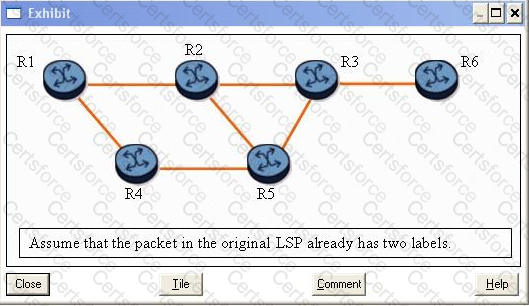
- The protected path is R1-R2-R3-R6.
- Fast reroute one-to-one protection is enabled.
If the original LSP already has two labels, and router R2 has failed, how many labels will there be in packets on the detour path?
Click on the exhibit.
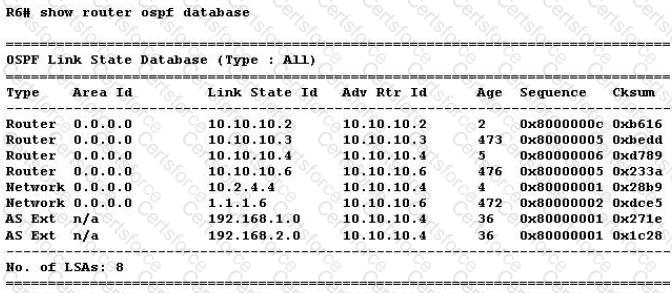
Given the output shown, which router is the ASBR in this network?
Which of the following statements regarding the last two octets of the LDP identifier is true?
Click on the exhibit button below.
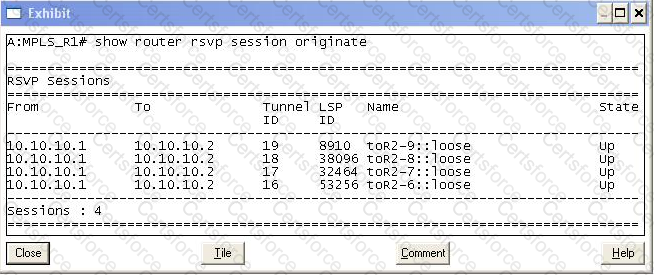
Which fields in this output uniquely identify the RSVP session belonging to a single LSP? (Choose three)
Which of the following is FALSE about the databases used by a link-state routing protocol in a single area routing domain?
Which of the following statements are true? Choose two answers
Click on the exhibit button below.
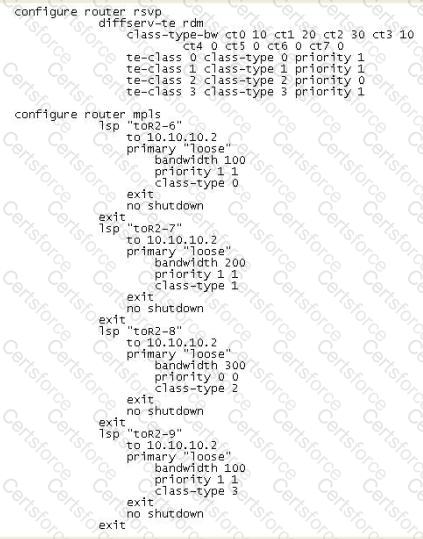
If the four LSPs shown use the shared-explicit reservation style, how much bandwidth does CSPF request across a single 1Gbps link?
Which of the following statements is true when the implicit null is implemented?
Which of the following statements regarding the MPLS SWAP label operation is true?
Click on the exhibit.
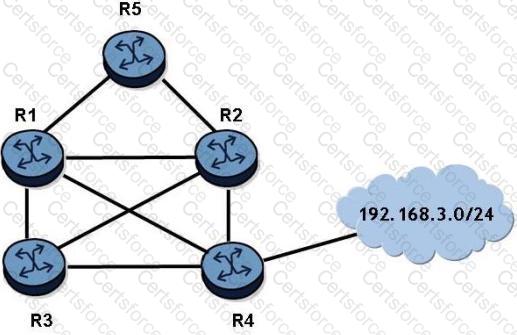
OSPF is operational on all links in the network diagram, all links have the same cost and all routers are configured with an ECMP value of 4. Router R4 advertises the prefix 192.168.3.0/24 into OSPF.
How many entries for prefix 192.168.3.0/24 will be l n router R1's routing table?
Which of the following is described by the following statement? An LSR propagates a label mapping only for a FEC for which it has a label mapping for the FEC next-hop.
Click on the exhibit.

What type of OSPFv3 LSA is shown?
Which of the following are top level TLV types defined for OSPF-TE? Choose two answers.
If the destination IP address of a received unlabeled packet is successfully matched in the FIB, which of the following statements are true? Choose two answers.
Which of the following best describes the forwarding of a IPv6 packet that has a destination anycast address?